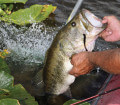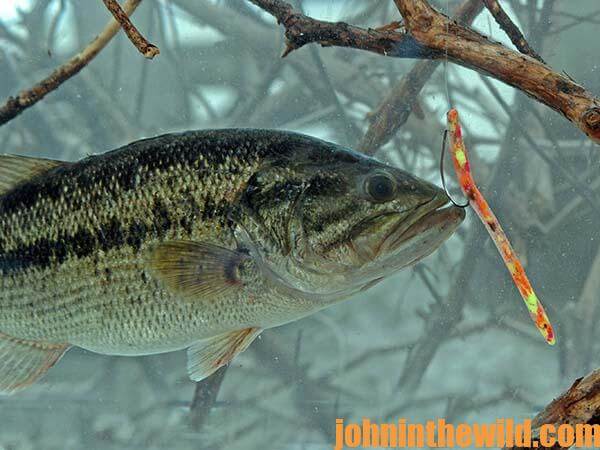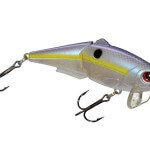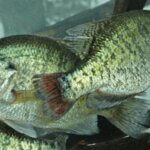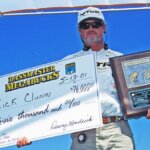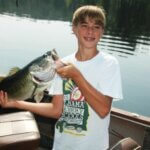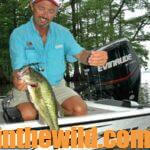John’s Note: When we asked two of the nation’s top bass fishermen, Denny Brauer of Camdenton, Missouri, and Mark Davis of Mount Ida, Arkansas, to give our readers the best information on how to catch bass at this time of the year, they somewhat surprised us when they both named the buzzbait, a top water lure, as their number one choice for late fall and wintertime bass fishing, although they also selected other baits. Many people don’t realize that in the late fall and the early winter, bass still will take top water lures. We’ve asked the pros why, what lures we should fish, and how to fish those lures. Mark Davis of Mt. Ida, Arkansas, has won the Angler of the Year title four times and the Bassmaster Classic. He’s one of the most consistent fishermen on the BASS circuit. Although Davis likes a buzzbait, he also fishes primarily wake baits in cooler temperatures.
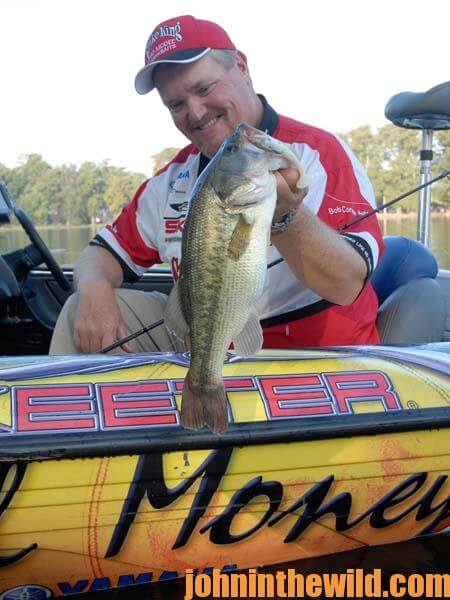 A wake bait is any type of topwater lure that stays on top of the water when you start your retrieve, wobbles from side to side and creates a wake on top of the water, just like a boat does.
A wake bait is any type of topwater lure that stays on top of the water when you start your retrieve, wobbles from side to side and creates a wake on top of the water, just like a boat does.
That’s all the action the bait has. It doesn’t pop, spit, bob or have any of the actions of other top-water lures. A wake bait swims on the surface like an addled or injured shad that for some reason can’t seem to go down and swim underwater.
In the late fall or early winter and the early spring when the water starts to warm up, the first top water bite you can get usually will be on a wake bait. The Wake Shad (www.strikeking.com) makes a very subtle disturbance on top of the water. It’s not popping like a Pop-R, it’s not darting and diving like a walking bait, and it’s not sputtering and splashing like a prop bait. The Wake Shad just moves slowly and easily across the top of the water. The reason I like this bait is it will get you a top water bite much earlier or later in the year than any other lure will.
I’ve caught bass on the Wake Shad when the water temperature is as cold as 42 or 43 degrees.
In many areas in the South, that’s the wintertime temperature of many of the lakes. Now one of the reasons the Wake Shad is such an effective winter and early spring bait is because often in the early and late winter in the South, cold fronts will come through and when a cold front hits the lake, the shad become addled and disoriented.
These cold fronts even may kill the shad.

Many times as the shad start to die, they’ll come to the surface and begin to slowly swim around on the surface, just like the Wake Shad does. Knowing that this happens every year, the bass will be up near the surface looking for these dazed and dying shad that present big meals easy for the bass to catch without expending much energy. I’ve learned this technique when I’ve been fishing for saltwater striped bass and have caught numbers of largemouths and spotted bass with this tactic in cold water.
Strike King developed the Wake Shad, because for many years the company had modified different baits that weren’t meant to be wake baits but that would move across the top of the water and give off this wake. But the Strike King Wake Shad was actually designed and built to give that waking action that pro fishermen found to be so deadly. Again, I’m fishing the Wake Shad when most anglers haven’t even thought about fishing a top water lure, because the water’s so cold. So, what the creation of the Wake Shad has done for us is given us a new lure the bass haven’t seen before that we can use at a time of the year when most anglers aren’t even fishing, and especially aren’t fishing top-water lures.
To learn more about bass fishing, get John E. Phillips’ Kindle eBooks and some print books, “How to Bass Fish Like a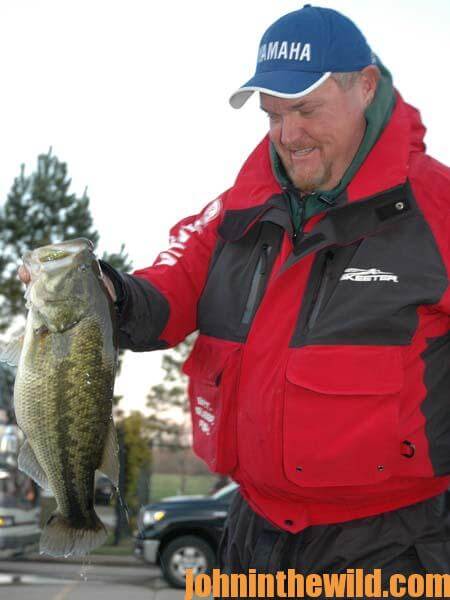 Pro,” “How to Win a Bass Tournament,” “Catch the Most and Biggest Bass in Any Lake: 18 Pro Fishermen’s Best Tactics, “Hot Weather Bass Tactics” and “How to Become A Tournament Bass Fisherman.” Click here to get these books.
Pro,” “How to Win a Bass Tournament,” “Catch the Most and Biggest Bass in Any Lake: 18 Pro Fishermen’s Best Tactics, “Hot Weather Bass Tactics” and “How to Become A Tournament Bass Fisherman.” Click here to get these books.
About the Author
John Phillips, winner of the 2012 Homer Circle Fishing Award for outstanding fishing writer by the American Sportfishing Association (ASA) and the Professional Outdoor Media Association (POMA), the 2008 Crossbow Communicator of the year and the 2007 Legendary Communicator chosen for induction into the National Fresh Water Hall of Fame, is a freelance writer (over 6,000 magazine articles for about 100 magazines and several thousand newspaper columns published), magazine editor, photographer for print media as well as industry catalogues (over 25,000 photos published), lecturer, outdoor consultant, marketing consultant, book author and daily internet content provider with an overview of the outdoors.

